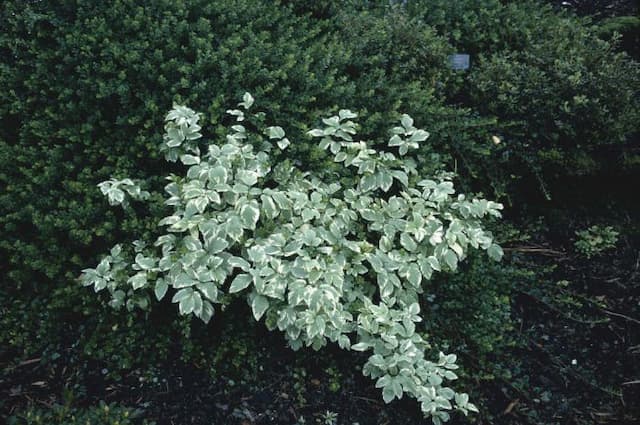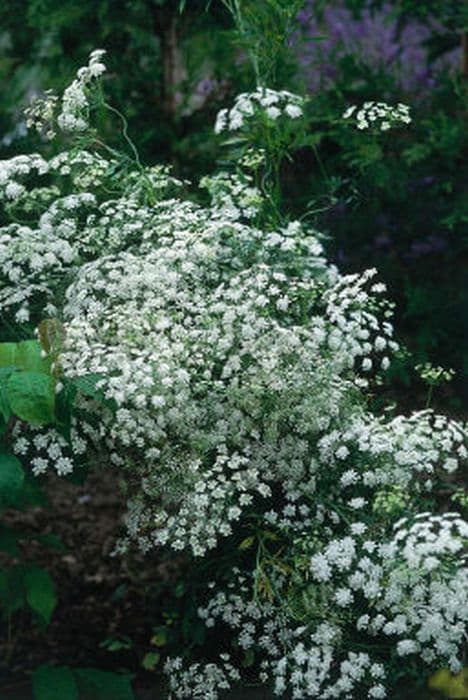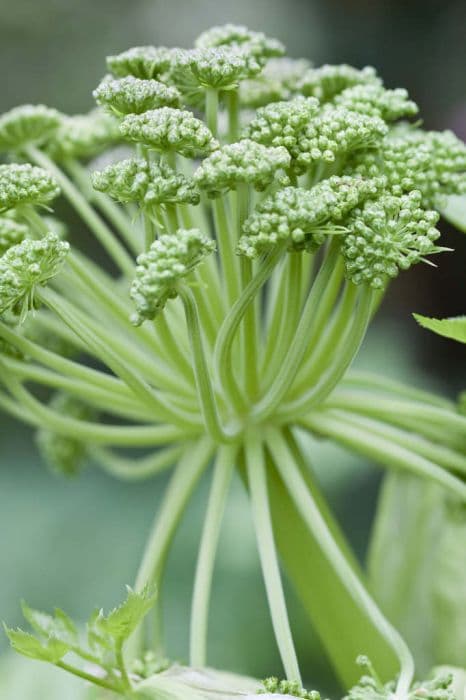Carrot Daucus carota 'Nutri-red' (PBR)

ABOUT
The plant known as 'Nutri-red' is a variant of the common carrot. This particular variety is distinguished by its vibrant red roots, which present a striking contrast to the more familiar orange specimens. The red hue penetrates throughout the flesh, creating an eye-catching cross-section when sliced. The foliage of 'Nutri-red' is feathery and green, typical of carrot tops, and provides a nice aesthetic complement to the bold color of the roots below the soil. This variety is valued not only for its ornamental qualities but also for its purportedly higher levels of certain nutrients compared to other carrots. Overall, 'Nutri-red' adds a unique twist to the classic appearance of a carrot.
About this plant
 Names
NamesFamily
Apiaceae
Synonyms
Nutri-Red Carrot
Common names
Daucus carota 'Nutri-red'.
 Toxicity
ToxicityTo humans
The plant commonly known as carrot, specifically the Daucus carota 'Nutri-red' variety, is not toxic to humans. Carrots are widely consumed as food and are known for their nutritional value, including high levels of beta-carotene, fiber, and other vitamins. Eating carrots does not generally lead to poisoning or adverse health effects when consumed as part of a typical diet. In fact, they are often included in many dietary recommendations for a healthy lifestyle.
To pets
The carrot, specifically the Daucus carota 'Nutri-red' variety, is generally considered non-toxic to pets such as dogs and cats. It is a safe treat in moderation, being low in calories and high in fiber and vitamins. However, it is important to feed carrots to pets in small amounts as large quantities can cause digestive upset. Choking can also be a risk, particularly for smaller pets, if the carrot pieces are too large. Overall, there are no specific symptoms of poisoning from carrots as they are not poisonous to pets.
 Characteristics
CharacteristicsLife cycle
Biennials
Foliage type
Deciduous
Color of leaves
Green
Flower color
White
Height
1-3 feet (0.3-0.9 meters)
Spread
6-18 inches (15-45 centimeters)
Plant type
Herb
Hardiness zones
3-9
Native area
Europe
Benefits
 General Benefits
General Benefits- Nutritional Value: 'Nutri-red' carrots are particularly high in beta-carotene, which the body converts into vitamin A.
- Visual Appeal: The bright red color of the roots can add a splash of color to meals and is appealing for fresh market sales.
- Flavor: Red carrots often have a sweet, crisp taste that is well-regarded for raw consumption and in cooking.
- Garden Aesthetics: 'Nutri-red' carrots can add diversity and visual interest to a vegetable garden.
- Good for Storage: These carrots can be stored for several months under the right conditions, extending their usability after harvest.
- Soil Health: Like other carrots, 'Nutri-red' can help break up compact soil, improving soil structure with their deep roots.
 Medical Properties
Medical Properties- This plant is not used for medical purposes.
 Air-purifying Qualities
Air-purifying QualitiesThis plant is not specifically known for air purifying qualities.
 Other Uses
Other Uses- Adding color to salads: The vibrant red color of carrots can be used to enhance the visual appeal of salads.
- Natural fabric dye: The pigments from 'Nutri-red' carrots can be used to dye fabrics a reddish hue.
- Decorative garnishes: Carved or sliced thinly, these carrots can create stunning decorative garnishes for culinary presentations.
- Artistic pigment: The juice from 'Nutri-red' carrots can be used as a natural pigment in watercolor paintings and other artistic endeavors.
- Photography subjects: The unique coloration of 'Nutri-red' carrots makes them interesting subjects for still life photography.
- Cooking colorant: Carrot extract can be used to add color to dishes without using artificial food colorings.
- Flavor infusion: 'Nutri-red' carrots can be used to infuse oils and vinegars with both color and a subtle carrot flavor.
- Educational tools: These carrots can be used in educational settings to teach children about plant biology, genetics, and horticulture.
- Companion planting: 'Nutri-red' carrots can be planted alongside other vegetables as a companion plant to potentially help deter pests.
- Culinary competitions: Unique colored varieties like 'Nutri-red' carrots provide an advantage in culinary competitions where appearance and innovation are judged.
Interesting Facts
 Feng Shui
Feng ShuiThe carrot is not used in Feng Shui practice.
 Zodiac Sign Compitability
Zodiac Sign CompitabilityThe carrot is not used in astrology practice.
 Plant Symbolism
Plant Symbolism- Fertility: The Daucus carota, commonly known as 'Carrot,' often symbolizes fertility due to its ability to produce a high number of seeds and its vigorous root system.
- Grounding: As a root vegetable, the carrot signifies grounding because it grows within the earth, embodying stability and a strong foundation.
- Nourishment: Carrots are known for their nutritional value and thus represent nourishment and sustenance.
- Vitality: Rich in vitamin A and antioxidants, carrots are also associated with vitality and the maintenance of good health.
 Water
WaterCarrot 'Nutri-red' prefers consistent moisture, especially during germination and root development stages. Water the carrots with about 1 inch of water per week, which equates to about 0.623 gallons per square foot. It's best to water deeply and less frequently to encourage deep root growth. During hotter periods or if you have sandy soil, you may need to water twice a week. Ensure the soil is damp but not waterlogged, as overwatering can cause the roots to rot.
 Light
LightCarrot 'Nutri-red' grows best in full sunlight, which means they need at least 6 to 8 hours of direct sunlight each day. Position them in a place in your garden where they can receive unobstructed sunlight. They can tolerate some light shade but this will likely reduce their robustness and sweetness.
 Temperature
TemperatureCarrots like 'Nutri-red' thrive in cooler temperatures, ideally between 60 and 70 degrees Fahrenheit. They can survive a frost and can be planted in temperatures as low as 40 degrees Fahrenheit. Conversely, they can also withstand temperatures up to 85 degrees Fahrenheit, but consistently high temperatures may cause the carrots to become woody or poorly flavored.
 Pruning
PruningCarrots like 'Nutri-red' do not require pruning in a traditional sense, but thinning the seedlings is important. Thin the carrot seedlings to about 2 to 3 inches apart once they're an inch tall. This prevents overcrowding and ensures the development of full-sized carrots. The best time to thin is in the cool part of the day to minimize stress on the plants.
 Cleaning
CleaningAs needed
 Soil
SoilRed Carrots prefer well-drained soil with a pH of 6.0 to 6.8. A mix of garden soil, compost, and sand is ideal for good root development.
 Repotting
RepottingRed Carrots do not need to be repotted as they are biennial and typically harvested the same season they are planted.
 Humidity & Misting
Humidity & MistingRed Carrots tolerate average outdoor humidity levels and do not require specific humidity adjustments.
 Suitable locations
Suitable locationsIndoor
Grow Red Carrots indoor in deep pots with ample light.
Outdoor
Plant Red Carrots in sunny spot, loose soil, thin seedlings.
Hardiness zone
3-9 USDA
 Life cycle
Life cycleDaucus carota 'Nutri-red' (PBR), commonly known as Nutri-Red Carrot, begins its life cycle with seed germination, which occurs when conditions are cool and moist, usually in spring or early summer. The seeds sprout and develop into seedlings with feathery green leaves, a stage that requires consistent moisture and weeding. As the plant matures, it develops a thick taproot – the edible carrot – which is typically redder in color than other varieties and rich in lycopene. During the growing season, the carrot elongates and gains mass in a process that can take several months, dependent on the climate and care. If allowed to flower in its second year, it will produce white, lacy umbels of flowers that attract beneficial insects. Once the flowers are pollinated, the plant will set seeds that can be collected for future planting or left to self-sow, completing its biennial cycle.
 Propogation
PropogationPropogation time
Early Spring
The most common method of propagating Daucus carota 'Nutri-red', commonly known as carrot, is by sowing seeds. Seeds should be directly sown in the garden bed after the last spring frost when the soil has warmed up. Optimal soil temperatures are around 60°F to 65°F (15°C to 18°C). Sow seeds shallowly at a depth of about 1/4 to 1/2 inch (~6 to 12 mm) and space them 2 to 3 inches (approximately 5 to 7.5 cm) apart. Carrots are root vegetables, so they do not transplant well and should be sown where they are to grow. Seedlings will usually appear within 2 to 3 weeks. Thin seedlings to 3 to 4 inches (about 7.5 to 10 cm) apart once they are a few inches tall to ensure proper root development.









